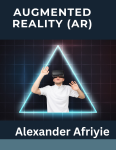Introduction
Augmented reality is an emerging technology with endless possibilities. This introductory book aims to equip readers with a solid understanding of AR and its potential uses in various industries. By the end of this book, readers will have the necessary skills and knowledge to create their own AR experiences using different hardware and software tools. With this foundation, they can explore deeper into the world of AR or utilize it in their professional careers.
This module will provide readers with a comprehensive understanding of augmented reality (AR), its creation and development, and the various applications and potential uses in different industries. Readers will gain hands-on experience with AR technology through interactive activities and demonstrations.
This module is suitable for individuals who have basic knowledge of computer technology and are interested in learning more about augmented reality. It is particularly beneficial for professionals working in industries where AR has potential applications such as gaming, education, marketing, etc.
At the end of this module, readers will be required to complete a project where they will design and develop an AR experience using the skills and knowledge gained throughout the book. The project will be evaluated based on creativity, functionality, and adherence to best practices.
Learning Objectives:
– Define augmented reality and differentiate it from virtual reality
– Understand the history of AR and how it has evolved over time
– Familiarize yourself with AR hardware, software, and development tools
– Identify current uses of AR in different industries such as gaming, healthcare, education, retail, etc.
– Learn about the potential future developments and trends in AR technology
Table of Contents
Module 1: Introduction to Augmented Reality
- Explanation of what AR is
- Differentiate Augmented Reality from virtual reality
- Evolution of AR
Module 2: Understanding Hardware for Augmented Reality
- Types of devices used for AR
- Features and capabilities of each device
- Considerations when selecting hardware for specific applications
Module 3: Software for Augmented Reality
- Various software options available for creating AR experiences
- AR hardware, software, and development tools
- Comparison of features and functionalities
- Hands-on practice with a selected software tool
Module 4: Developing an Augmented Reality Experience
- Steps involved in creating an AR experience from ideation to implementation
- Best practices for developing engaging and effective AR content
- Tips for troubleshooting common issues during development
Module 5: Applications of Augmented Reality
- Identify current uses of AR in different industries such as gaming, healthcare, education, retail, etc.
- Real-world examples of how AR is currently being used in various industries such as gaming, healthcare, education, retail, etc.
- Discussion on the benefits and limitations of using AR in these industries
Module 6: Future Developments in Augmented Reality
- Emerging trends in AR technology
- Predictions on how it may evolve in the future
- Ethical considerations related to the use of AR
Module 7: Exams




Reviews
There are no reviews yet.